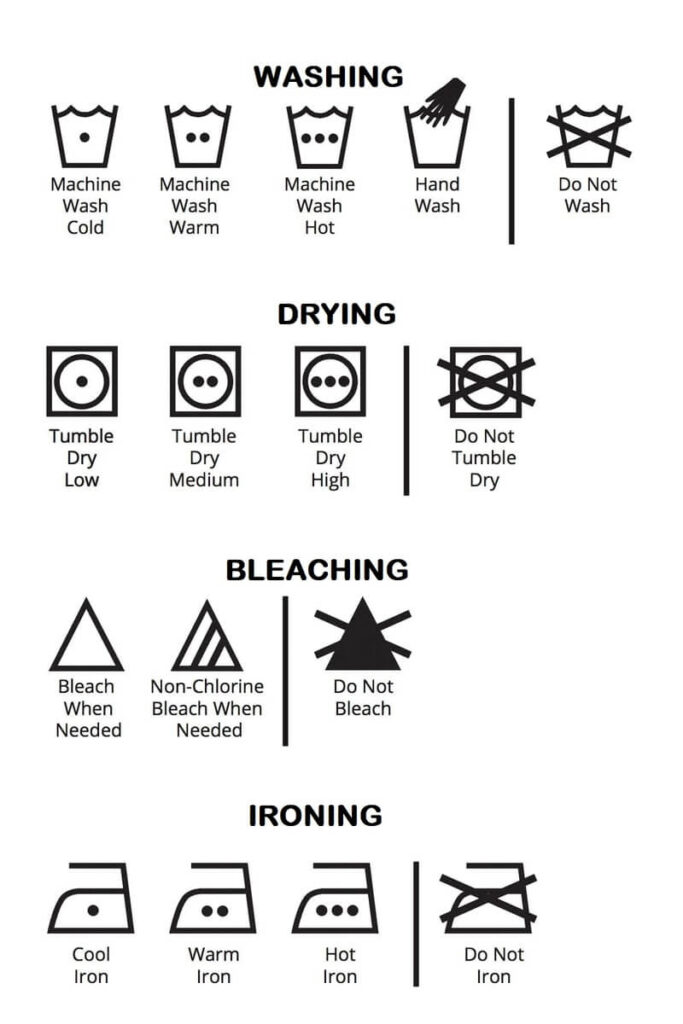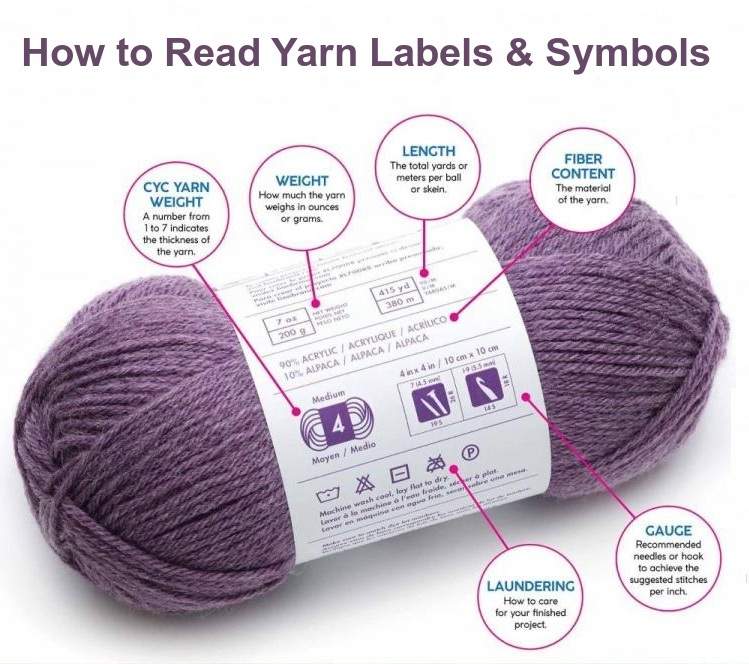Have you ever stood in a craft store, overwhelmed by the colorful mountains of yarn, each one covered in mysterious symbols and numbers? You’re not alone! Yarn labels might seem like a secret language at first, but with a little know-how, you’ll be decoding them like a pro in no time.
This guide will walk you through everything you need to know about reading yarn labels, so you can choose the perfect yarn for your next project with confidence!
Essential Yarn Label Information
Imagine a yarn label as your tiny instruction manual. It tells you everything you need to know about that beautiful skein of yarn, from what it’s made of to how to care for it once you’ve knitted or crocheted it into something amazing. Let’s break down the key pieces of information you’ll find:
Essential Info: What You Absolutely Need to Know
Let’s start with the basics. Every yarn label will have some key details you should be familiar with:
Brand and Yarn Name:
This is like the yarn’s name tag! It helps you identify the specific yarn you’re using, which can be helpful if you need to buy more later.
Fiber Content:
This tells you what kind of material the yarn is made of, like wool, cotton, acrylic, or a blend. Different fibers have different properties, so this information is important for understanding how your project will feel and behave.
To learn more about the different fiber types and their properties, check out our previous post on Yarn Fibers.
Weight and Length:
Imagine yarn weight like the thickness of a straw. There’s “lace weight” which is super thin, like a skinny straw, and then there’s “bulky weight” which is nice and thick, like a milkshake straw.
The label will tell you the weight category (usually a number from 0 to 7) and the length of yarn in the skein (yards or meters). This is crucial for figuring out how much yarn you’ll need for your project.
Dye Lot:
This is a fancy way of saying all the yarn in a batch was dyed the same color. It’s important to use yarn from the same dye lot for your project if you want consistent color throughout.
If you plan on making a large project and need to buy multiple skeins, try to get them from the same dye lot to avoid any noticeable color variations.
Understanding Yarn Label Symbols
Now, let’s get into the fun part – deciphering the symbols! These little icons hold the key to choosing the right yarn for your project and achieving the perfect finished size. Here are some of the most common ones:
Yarn Weight:
Look for a little picture of a ball of yarn with a number inside. This number corresponds to the Craft Yarn Council weight system (0-7) we mentioned earlier. The higher the number, the thicker the yarn.
To learn more about the different yarn weight categories and their properties, revisit our previous post “What is Yarn?
For a refresher on the different yarn weight categories and their characteristics, revisit our previous post: Yarn Types & Weights Explained.
Gauge:
This might look like a little square with numbers inside, like “4 stitches x 4 rows = 1 inch.” Gauge tells you how many stitches and rows you’ll get per inch using a specific needle or hook size with that particular yarn. It’s like a recipe for how big or small your stitches will be.
Understanding gauge is essential for achieving the correct size in your project. The label might also provide recommended needle or hook sizes to achieve the gauge swatch.
Yarn Label Care Instructions
The care Instruction symbols look a bit like laundry tags on clothes. They’ll tell you how to wash, dry, iron, and bleach your finished project to keep it looking its best.

Yarn Symbols Explained:
Let’s break down some of the most common care symbols you might encounter on yarn labels:
Washing:
A washing machine symbol with one or two dots inside tells you the water temperature for washing. One dot usually means cold water, and two dots mean warm water. A crossed-out washing machine symbol means don’t wash the item at all.
A handwashing symbol might have additional details like water temperature or instructions for gentle washing.
Drying:
A square with a circle inside represents tumble drying. One dot usually means low heat, and two dots mean medium heat. A crossed-out square with a circle means do not tumble dry.
A hanger symbol signifies that the item should be hung to dry. Dots or lines on the hanger might indicate sun drying or shade drying.
Bleaching:
A triangle symbol with a diagonal line through it means do not bleach. A plain triangle symbol means bleach can be used safely, but always check the care instructions for any specific bleach recommendations.
Ironing:
An iron symbol with dots inside indicates ironing temperatures. More dots generally mean a higher heat setting is acceptable. A crossed-out iron symbol means do not iron the item.
Bonus Tips
Feeling confident? Here are a couple of extra things to keep in mind:
- Meterage vs. Yardage: If you’re crafting outside the US, you might see yarn length listed in meters instead of yards. No worries, a quick online conversion calculator can help you out.
- Fiber Blends: Many yarns are a mix of different fibers. This can affect the yarn’s properties, like warmth, softness, and care needs. Be sure to read the label carefully to understand the blend and how it might impact how you care for your finished project. For example, a yarn with a high acrylic content might be machine washable and dryable, while a yarn with a high wool content might require hand washing and lay-flat drying.
Top Tips for Yarn Label Mastery
Now that you’re armed with this knowledge, here are some tips to put your yarn label superpowers into action:
- Keep those labels! You never know when you might need to reference the information later, especially if you’re making a second project with the same yarn.
- The internet is your friend! If you encounter a symbol not mentioned here, a quick online search can usually help you figure it out.
- When in doubt, ask! Your local yarn store employees are there to help. They can answer your questions and guide you towards the perfect yarn for your project based on the label information.
And there you have it! With these tips, reading yarn labels won’t be a mystery anymore. Next time you pick up a skein of yarn, take a moment to examine the label. It’s like a tiny instruction booklet for your project, telling you everything you need to know to create something amazing. So, happy crafting, and remember, a little label knowledge goes a long way.

